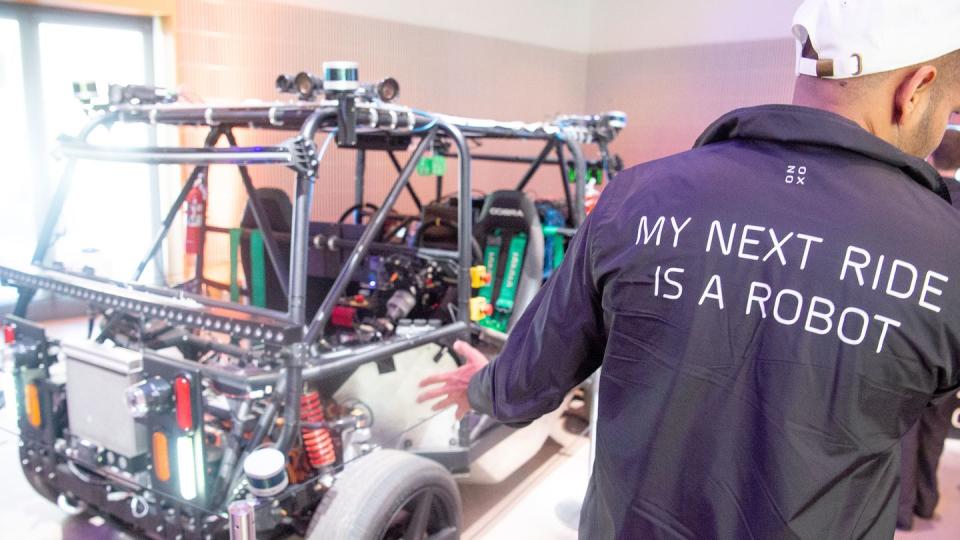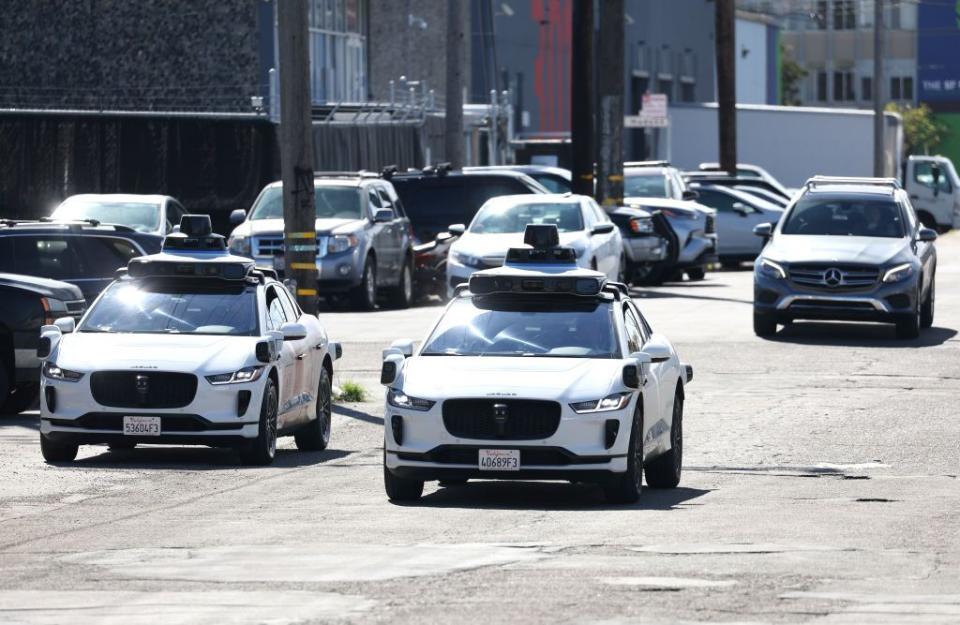Where Are the Robotaxis? Self-Driving Vehicles Are Downshifting

It seems self-driving vehicles are downshifting, based on regulatory response to accidents, people vandalizing robotaxis in California, and research finding low consumer confidence in the technology.
Perhaps San Francisco—a city with decent public transportation and a growing biking community—was not the best place for Waymo and Cruise to experiment?
“The assumption that highway Level 4 is easier than urban Level 4 is common, but we’ve learned that’s mistaken. Higher speeds bring unique challenges,” says John Krafcik, the former Waymo CEO.
In San Francisco’s Chinatown last month, a crowd celebrating the Lunar New Year surrounded an empty Waymo Jaguar, broke its windows and threw fireworks inside, The San Francisco Standard reports.
There were no injuries from the incident, according to Waymo. A few days earlier in the city, according to the San Francisco Examiner, a Waymo robotaxi hit a cyclist, causing minor injuries and no hospitalization.
The Lunar New Year torching got very little media attention outside the city. General Motors’ Cruise already had pulled its operations out of San Francisco following a serious injury to a pedestrian, just weeks after the California Public Utilities Commission gave both Waymo and Cruise permission to charge robotaxi fares 24/7 in the city in the face of protests by cyclists and other locals opposed to the geofenced autonomous cabs.
In a guest editorial in the Standard, Mayor London Breed described the robotaxi’s torching as an act of vandalism, “not a political act.”
But a video posted to social media revealed a crowd of about a dozen people surrounding the Waymo Jaguar and scribbling graffiti on its doors, the front-left fender and the hood. “One man bashed the front passenger window and windshield with a skateboard,” the Standard’s story said, “shattering the glass.”
This month, San Francisco police arrested a man in connection with two Tesla fires and said he was not a suspect in the Waymo torching, “as the department initially said,” according to the Standard.

Perhaps San Francisco—a city with decent public transportation and a biking community growing bigger as e-bikes became a popular way to handle its steep hills—was not the best place for Waymo and Cruise to experiment?
“I suppose it’s a good sign in this environment that one has to be reminded that Waymo, and AV tech in general, didn’t exactly launch in San Francisco,” John Krafcik, who was Waymo’s CEO from 2015 to 2021, told Autoweek via email.
“Waymo launched its AV ride-hailing service in Metro Phoenix, in fall 2020, in an area larger than San Francisco, in a safe, drama-free fashion two years before it launched in San Francisco.”
Sam Abuelsamid, principal analyst for Guidehouse Insights, added: “Generally, I think Waymo has done a better job working with officials, collaborating with cities.”
The CPUC in February was about to expand the parts of California where Waymo would be allowed to run commercial operations, adding San Mateo County, which would make the Jaguar robotaxis potential airport shuttles between the city and San Francisco International, as well as in Los Angeles County.
But the CPUC notified the company it was suspending its request to expand commercial operations for “further staff review,” according to the Examiner. The CPUC’s deadline for approving or denying Waymo’s request is now pushed back to June 19.
Autonomous-vehicle development was for a long time on the same upward trajectory as electric vehicles, but now the two technologies seem to be suffering hiccups on their own, individually.
“AVs benefit from electrification,” Abuelsamid said. “And EVs can move forward without AV technology, but the opposite is more challenging.”
Ford Motor Company pulled support of Argo AI, putting the autonomous technology company it worked with in a collaboration with Volkswagen AG out of business in late 2022, though Ford’s own Blue Cruise highway driving assist has since been top-rated by Consumer Reports.

But in mid-March, the National Transportation Safety Board launched an investigation of Ford’s hands-free driver system regarding a fatal accident in which a BlueCruise-equipped Mustang Mach-E struck a Honda CR-V that was stationary on Highway 10 in San Antonio, according to Reuters. The CR-V driver later died.
Tesla CEO Elon Musk has repeatedly referred to the automaker’s autonomous technology as “full self-driving” and once suggested it would be criminally negligent to withhold the technology from the general driving public.
But following 41 special crash investigations into Tesla’s Autopilot technology—now called Full Self Driving—the National Highway Traffic Safety Administration has launched a full-out preliminary investigation of the EV automaker’s system.
NHTSA has so far linked 273 of 392 Tesla crashes and five of six reported deaths between July 1, 2021, and May 15, 2022, to Autopilot/Full Self-Driving, according to a timeline by auto journalist Benjamin Hunting, for a report by CapitalOne’s Auto Navigator.
Combine the Cruise, Waymo, and Tesla incidents with consumer surveys in recent years indicating low confidence in autonomous vehicles, and it becomes clear why we don’t have driverless cars roaming the Earth, quite yet.
A March 2022 survey by the Pew Research Center on artificial intelligence and human enhancement found that 44% believe “widespread use of driverless cars would be bad for society.” The 28% who think it would be “good” were outpolled by the 29% who were “not sure.”
“I think it’s more than a blip, but I don’t think it’s permanent,” Abuelsamid said. “But it is an indication it’s a much harder problem to solve than we thought 10 years ago, or even five years ago.”
Alphabet’s Waymo, as Google back in the day, and GM, long before it bought Cruise, could both be considered pioneers in self-driving vehicles, going back to the DARPA (Defense Advanced Research Project Agency) Challenges of the ‘00s.
While GM and its competitors have tackled the problem of self-driving beginning with freeways, Waymo (and Cruise) began at the stop-and-go, urban congestion-end of the driving experience.

“The fifth generation of the Waymo Driver’s urban AV ride-hailing technology has progressed on track, but that’s not the case for highway driving, which has taken longer than we had expected,” says Krafcik, the former Waymo CEO who now serves on Rivian’s board of directors and Daimler Truck’s supervisory board.
“The assumption that highway Level 4 is easier than urban Level 4 is common, but we’ve learned that’s mistaken. Higher speeds bring unique challenges… We can all remember seeing pedestrians and cyclists on highways, which means even more robust long-range perception, behavior prediction, and path-planning approaches for highway Level 4 are needed to handle those rare occurrences,” Krafcik says.
“Broad application of highway L4 technology, at scale, is going to take longer than most think.”
Are you at all hopeful that you could someday ride safely in a self-driven vehicle? Please comment below.

 Yahoo Autos
Yahoo Autos 